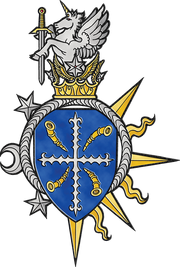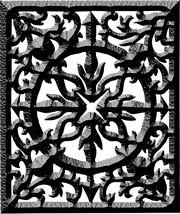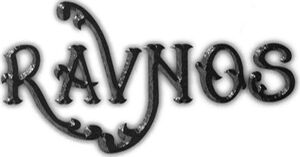
| |
| Name: | Ravnos |
| Plural: | Ravnos |
| Pronunciation: | rahv'-nohs |
| Nicknames: | Gypsies Criminals Deceivers Charlatans |
| Antediluvian: | Zapathasura |
| Faction: | Independent |
| Disciplines: | Animalism Fortitude Chimerstry |
The Ravnos are one of the fifteen clans of Kindred in Vampire: The Masquerade. Known for being wandering vagabonds and hucksters, the Ravnos are charlatans who gleefully practice their arts of deception and theft. Nobody in the west understood the Ravnos, and now in the Final Nights, it's too late to do so. Misunderstood as a clan of gypsies and tricksters, the western Ravnos are a minor and heretical branch of the undead lords of India. Gifted with the power to manipulate maya, the Ravnos saw themselves as tempters and avengers, replacing the fallen Kuei-Jin in the scheme of the universe. All that is irrelevant now, however, as Zapathasura rose from his slumber in the Week of Nightmares and in his own death throes, wiped out nearly all of his clan.
Due to their inherent clan weakness, The Ravnos clan are all criminals; each Ravnos has a specific vice ranging from plagiarism to mass murder. When the opportunity to indulge that vice is present, Ravnos must succeed in a self-control check to avoid indulging it.
History
Early History

Rage card depicting a Ravnos.
Noddists say that in Enoch, Irad embraced a thief named Dracian, to spy on the Third Generation. Dracian immediately betrayed his sire to the other Antediluvians, leading to the end of the Second Generation.
However, the Ravnos claim a richer prehistory, recorded in the Karavalanisha Vrana, The Wounds of the Night's Sword. This epic poem details how angelic beings (probably Kuei-Jin) betrayed their original purpose and became blood-drinking demons; to balance them out, the Gods brought back to live a man who had been wronged more by these asuratziyya more than any other. This creature, named Zapathasura was charged by the Gods to exterminate the asuratziyya and restore balance to the world.
In his quest for vengeance, Zapathasura embraced five childer: Marizhavashti Kali, a seer; the Rakshasa, a shapeshifter; Chandraputra, a military leader; Ravana, who betrayed Zapathasura and may be the Yama King of the same name; and Ramessu, who served as an internal policeman for Zapathasura's war. These five Methuselahs are the ancestors of all other Ravnos. They served Zapathasura for centuries in prehistoric India until the wearied of their sire's endless war and slaughter, abandoning him to his own devices as time passed. Ravnos eventually fell into torpor and the clan restructured.
The majority of the elders left India for the west, while Chandraputra remained in the subcontinent and reordered the clan along a more caste-oriented society. This culture faced two invasions around the time of Alexander the Great - western vampires following the conqueror, and Kuei-Jin on a crusade from China. At this time, Ravnos society diverged. The Ravnos heading towards the west began to deviate from the philosophy of Zapathasura, eventually creating what would become known as the Path of Paradox. Meanwhile, the Indian Ravnos split into castes in a fashion similar to the Assamites, with multiple Jati fulfilling different roles in the war against the Wan Kuei.
Dark Ages

Clan Ravnos in the Dark Ages
Ravnos society in the Dark Ages was influenced by two phenomena: the continuing degeneration of western Ravnos from the Path of Paradox, and the influx of Indian Ravnos following the Rroma.
The Path of Paradox is a degenerate form of the Mayaparisatya, the classic path as followed in India. Sybaritic Roman Ravnos changed the path into a license for self interest and wanton diableries without following the original tenets. This form eventually became the standard path of the western clan, while the eastern path remained in India. The path of paradox and the associated culture of the clan led to the low reputation that the Ravnos had throughout Europe.
Meanwhile, unknown to the other clans, Ravnos arrived with the Rroma; these Ravnos were chandalas, almost the Ravnos equivalent of Caitiff, but still felt superior to their mongrel cousins. The cultural interchange (with knives) that followed led to a predominance of eastern Ravnos in the western clan. As time passed, the Rroma Ravnos became the stereotypical Ravnos in the minds of western Kindred, and the Path of Paradox became the standard path for western Ravnos.
Ravnos in Arabia and Northern Africa, called the Bay't Mujrim, were no more welcome in the Islamic world as their vices lead them into many unwelcome confrontations with the Ashirra. A few Murjrimin, mostly those from Alexandria, did manage to balance out their vices and become welcome in some Islamic circles.
By the 15th century, western Ravnos were stereotypically seen as Gypsies, degenerate and vermin.
- VTDA: Veil of Night, p. 118
Victorian Age
During this period, the Camarilla learned that not all Ravnos were Gypsies and that they were a formidable force in India.

Clan Ravnos in the Victorian Age
This discovery, of course, changed nothing in the way Western Ravnos were treated and seen in Camarilla society. Contributing to this, many Ravnos saw the harsh and strict Victorian taboos and rules as obstacles and constantly attcked and overstepped them in order to further destabilize the establishment. Many also used the blossoming interest in occultism and mysticism in order to trick and fool other Kindred and mortals alike with "long-forgotten secrets" and therelike.
Final Nights
For the Ravnos, the Final Nights were just that. The entire history of the clan pivots around the Week of Nightmares.
In the 1990s, the cold war between the Kuei Jin of the Infinite Thunders Court and the Ravnos of India heated up. The Ravnos eventually took a page from the Sabbat playbook and began mass-Embracing candidates, sending armies of neonates to be slaughtered by the Wan Kuei. The psychic backlash from these deaths reverberated up the lineages of the Ravnos, eventually waking Methuselahs who joined the fight, only to result in the eventual awakening of Zapathasura himself in 1999.
Zapathasura broke his fast on his own clan, then proceeded to attack everything in sight, including most of Bangladesh. His exact motivations were never clear, because by the time the dust settled, three Bodhisattvas, several packs of Garou, uncounted mortals and an awful lot of Technocracy ammunition had barely been able to stop the Antediluvian. With his dying curse, Zapathasura set off a psychic bomb within his own clan, resulting in the Ravnos devouring each other in a cannibalistic frenzy.
Most outsiders were aware only that the Ravnos spontaneously developed incredible powers of Chimerstry for about a week, then proceeded to attack and devour each other. By the time the Week of Nightmares ended, there were perhaps 100 Ravnos still this side of Final Death, and none of them (except Durga Syn) was of significant Generation or power. With their ranks significantly depleted and weakened, the surviving Ravnos of India sought shelter by other indian Kindred in order to avoid what would have otherwise been the finishing blow from their Bijali enemies of the Infinite Thunders Court.
Organization
Before the Week of Nightmares, the Ravnos were broken into western and eastern divisions. Western Ravnos are largely individuals without larger clan loyalties outside of perhaps tribal (and Rroma loyalties).
Eastern Ravnos have their own caste system, developed from the lineages that descended from Zapathasura. These jati are effectively bloodlines with the clan:
- The priests of the Indian Ravnos were the Brahmin, who maintain mayaparisatya and advise the other castes. The Brahmin replace Fortitude with Auspex, and many learn Sadhana. The Western cousins of this caste, the Phuri Dae, are treated as a distinct bloodline due to their variant clan Disciplines. Clanbook: Ravnos Revised erroneously names this caste as "Brahman".
- The Kshatriya were the military leaders of the Ravnos and ran the war against the asuratizayya.
- Vaisyas maintained the equivalent of a Masquerade in India and also managed mortal resources. The Vaisyas were effectively a military manager caste.
- Chandalas were the Ravnos equivalent of Caitiff; and Caitiff in India were automatically classified as Chandalas. Demotion to Chandala status was a common punishment for heresy.
These jati are directly related to the jati of Hindu society, with the equivalent of the Shudra caste being ghouls.
Since the Week of Nightmares, the Ravnos don't have a clan organization.
Clan variants
Over the various exodi from India, each Ravnos treck had other views, values and motivations, resulting in a multitude of branches of the Indian main Clan within Europe.
- Alexandrites - A branch that originated with the descendants of Ramessu. They were initially native to Egypt, and were noted as being extraordinarily formal in matters of Cainite etiquette. Rumors also tell that they believed that Akhenaten was their founder, cursed by the gods for revering the sun over everything else with never being able to see daylight.
- Bashirites - A branch that originated in a Ravnos known as Bashir. They believed into a combination christian doctrine and the adherents of the false Path of Paradox, and saw themselves as harbingers of the Apocalypse. They believed that Judas was the first of their kind, cursed by God for his betrayal with eternal wandering. Many of them later joined the antitribu.
- Kalderash - A small family of traders that has insituated itself into the Middle Kingdom and has managed to avoid clashes with the Kuei-jin.
- Phaedymites - A branch of chivalric Ravnos originating in the Methuselah Phaedyme. The Phaedymites tried to manage to control the urges of their Beast and served mainly as couriers. Furthermore, they were sworn enemies of the Sybarites
- Rroma (also called Phralmulo) - The stereotypical Gypsies, the Rroma became the greatest of these branches and the most present until the Week of Nightmares hit them. They had very close ties to their mortal families and usually traveled with them. They claimed that Caine (whom they call Kaen), embraced Ravnos as an act of kindness after he had left Cainite society, because Ravnos father Tshurka had bidden him to accompain him. Ravnos, in turn, Embraced much of his family at the behest of his prophetic sister Laetshi. Many claim that Caine forgave them their sins for this act of kindness and they are free to lie and steal as they see it fit. Other stories trace them back to the husband of Daenna, the mother of Gypsies, who was eventually killed by a vampire and his blood was given to young man named Ravnos. During the Holocaust, this branch suffered extremly and is today nearly exterminated, because of their proximity to other Ravnos when they fell into the cannibalistic Frenzy that destroyed them.
- Sybarites - Decadents that first arose in the days of ancient Rome, these Ravnos are responsible for the corruption of the original path of Paradox and their excesses were one of the main reasons that the Clan was regarded as better criminals.
- Yoryari - The Yoryari were a small splinter group of the Sybarites who are said to have founded a number of now forgotten philosophical variants on the false Path of Paradox, namely a belief that the primordial energy of change (weig) is held in all things, and that it needs to be released in order to transform reality.
Ravnos antitribu

| |
| Founder: | |
| Nicknames: | Rogues |
| Faction: | Sabbat |
| Disciplines: | Animalism, Fortitude, Chimerstry |
The Ravnos antitribu is possibly the least 'anti' as antitribu goes. They, too, revel in trickery and deceit. They too want to wander as they please, often joining nomadic packs. Sect notwithstanding, the Ravnos antitribu have a traditional code of conduct for dealing with their clanmates. This code may be difficult for those outside the clan to follow, but nonetheless, a Ravnos' word to his pack is the law. They follow the "spit and shake" rule of all Ravnos on verbal agreements, but the Rogues take this one step further. If a Sabbat member wants an agreement in writing, it will be signed in blood, the pen dipped in an open wound on the Ravnos' own arm. This binding in blood is as strong as the Vaulderie to the Sabbat Ravnos, and it can be broken only by Final Death. Violating the code costs the perpetrator a considerable loss of face with other Ravnos, which has been adopted by the sect at large. Few Sabbat Ravnos feel comfortable giving this guarantee to Sabbat members outside their clan, and most do get quite indignant should the other party suggest it.
In the Final Nights, the antitribu suffered the least of all branches of the clan, as many traveled in packs with various members of other Clans and could be put down by their packmates until their apocalyptic rages had died down.
Culture
Western Ravnos, historically connected with the oppressed Rroma, maintained a strong sense of clan solidarity for a very long time. The most common manifestation of this solidarity was through a form of retaliation called "The Treatment". The Treatment was a vengeance attack where a mistreated Ravnos would contact fellows in the clan, who would then swarm upon the city where the original Ravnos was victimized. In general, a dozen Ravnos running amok could bring even the most experienced Prince to the brink, and well-placed exaggerations about the impact of the Treatment was the main weapon the Ravnos used to squeeze out what place they did have in Western society.
Past that, Ravnos culture was dominated by its religious role; the greatest division between Indian and Western Ravnos being the differences between mayapisatya and the Path of Paradox. In 1998, Ravnos elders began to "educate" (with knives) their heretical cousins, setting the clan back on the straight and narrow.
In India, the Ravnos dominated the continent, probably the largest concentration of a single clan in one country. In several ways, the Ravnos paralleled the Assamites - both clans had a caste system invisible to outsiders, and both clans were defined by a military role.
Embraces
As with everything else in the clan, Embraces differed between Indian and Western Ravnos. Western Ravnos generally embraced only Gypsies (with the exception of the Ravnos antitribu who were noted for embracing gorgios) and generally embraced for any reason. Indian Ravnos viewed the Embrace as a means to fulfilling the fledgling's svadharma. In India, one's jati in life also defined one's jati in undeath.
Clan Weakness
The Ravnos clan are all criminals; each Ravnos has a specific vice ranging from plagiarism to mass murder. When the opportunity to indulge that vice is present, Ravnos must succeed in a self-control check to avoid indulging it.
Version Differences
Clan Ravnos has been extensively rewritten in each appearance in Vampire. Initially, this was because of the inaccurate (and offensive) treatment of Roma in WoD material (particularly through World of Darkness: Gypsies). Later editions are somewhat more accurate in that the Ravnos are now less of a "Gypsy clan" and more of an "Indian clan".
The other major weakness of the Ravnos was the original version of the path of Paradox, which was a form of the Path Of What I Was Going To Do Anyway. The result was the Indian path of paradox, which was more rigorous.
| Vampire: The Masquerade Clans |
|---|
| Banu Haqim (Assamites) · Brujah · Gangrel · Hecata (Cappadocians, Giovanni) · Lasombra · Malkavian · Ministry (Followers of Set) · Nosferatu · Ravnos · Salubri · Toreador · Tremere · Tzimisce · Ventrue |


